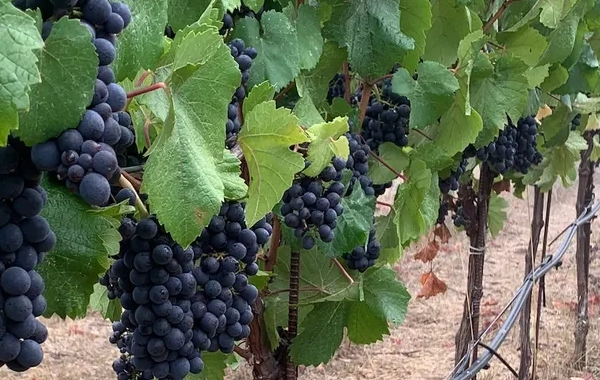Winter rains were well below normal this year. Usually we get up to 30 inches of rain through the winter, but in 2020-2021 we only received roughly 8 inches of rain.
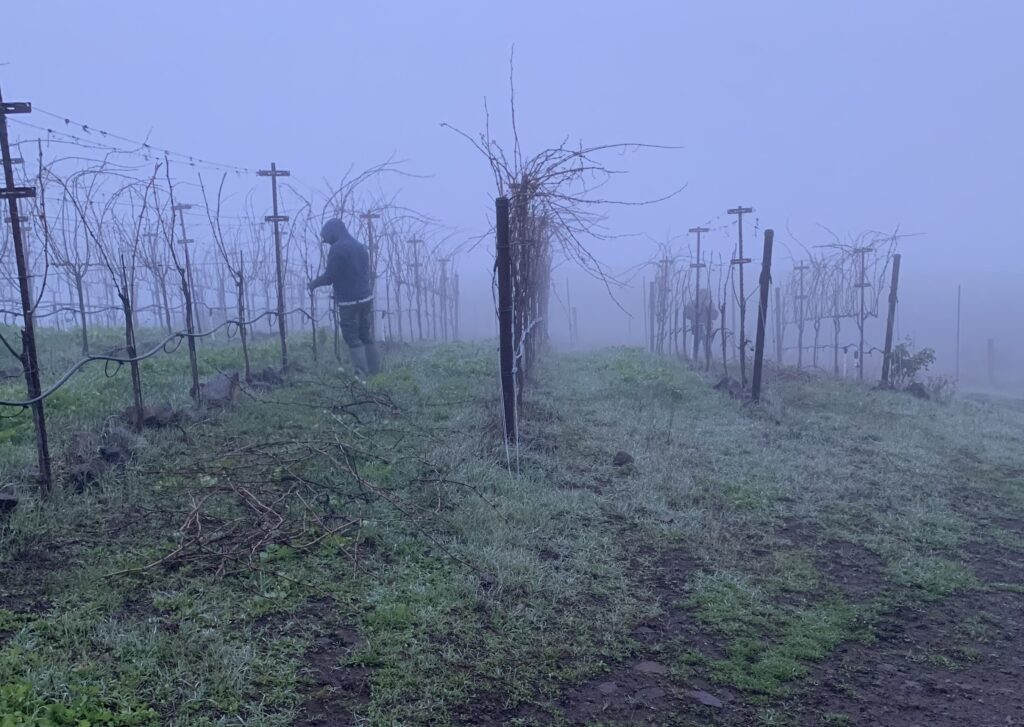
With the continuing drought in Northern California and all over the western United States, we feel lucky to have a strong producing well to provide irrigation to our five-year-old vines. Even so, we have been strategic about our watering this season, using only drip irrigation and timing our watering for when we need it – adding a bit more during heat spikes and backing off to encourage growth to the grapes after the summer solstice.
Early in the season – in February and March – we applied biodynamic preparations made from cow manure to strengthen the soil microbial balance and prepare the vines for the growing season. The cover crop of peas, beans and vetch planted last fall had grown to waist high by mid-March, and we decided it was time to mow – it was too slippery for me to get around in my little electric golf cart! .
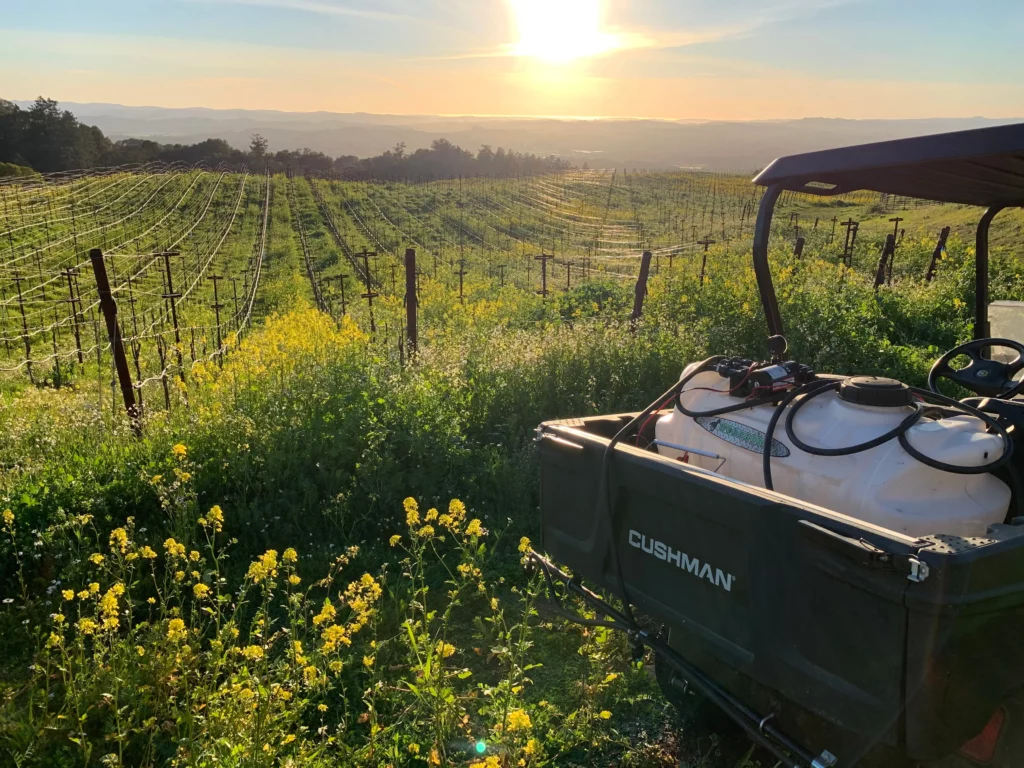
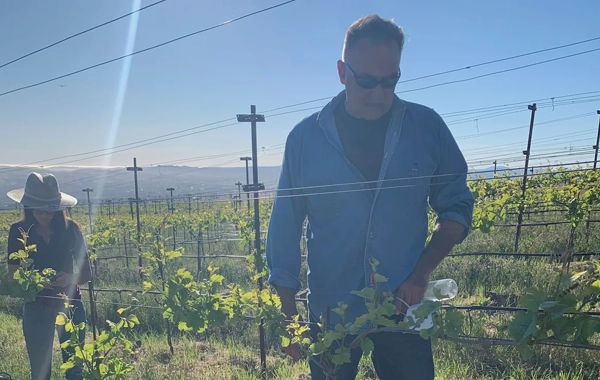
Early vine growth was vigorous, and we were grateful for the advice of Daniel Chavez of Daylight Vineyard Management, and Philippe Coderey and Natalie Winkler of Biodynamic Vineyard Consulting.
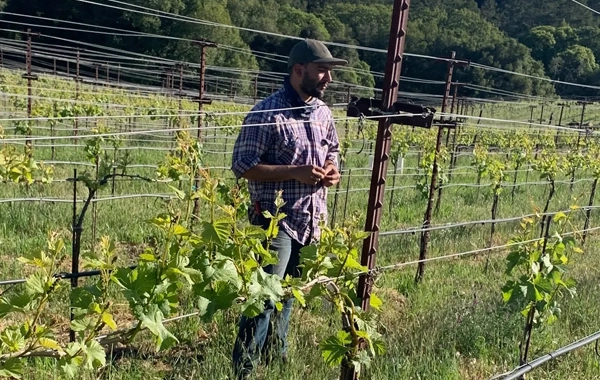
We discussed how to manage fruit on vines that were still struggling in the rocky soils, being careful not to allow too much fruit on shorter shoots, and managing the canopy to allow for the best ripening of fruit as the summer progressed.
Weed control was handled manually – by hand digging around each vine and then weed whacking in the vine rows. We are too rocky to control weeds by cultivation, and we don’t spray any herbicides, so dig we must! But each year the weeds are fewer. Applying a fermented weed tea in the fall helped control our milk thistle considerably.
Mid-June was a time to spray another biodynamic preparation – this time it was a fine silica spray to the foliage, sprayed early in the morning to avoid leaf burn. The silica helps the plants to balance photosynthesis and create stronger vines overall.
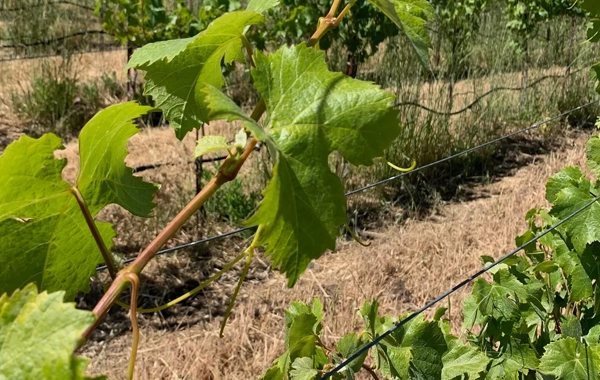
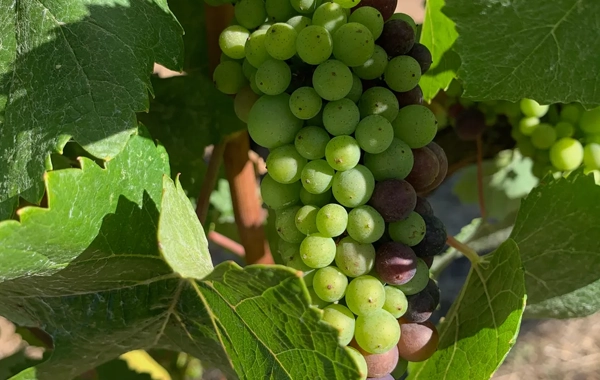
By early July the grapes were growing bigger, and it was time to thin the fruit to allow for a better balance on the vines – short shoots were relieved of their fruit, and longer shoots were reduced to two clusters per vine. Premium wineries require this practice, and it’s also better for our young vines not to be overtaxed.
By early August we were close to 90% veraison – most of the grapes were now a deep purple in color, and so now we are taking one final pass to trim away any green fruit that won’t ripen along with the rest of the crop, and tucking any unruly vines back into the trellis system. Adrian came out to get a baseline fruit sugar test, and now we wait for the grapes to ripen.
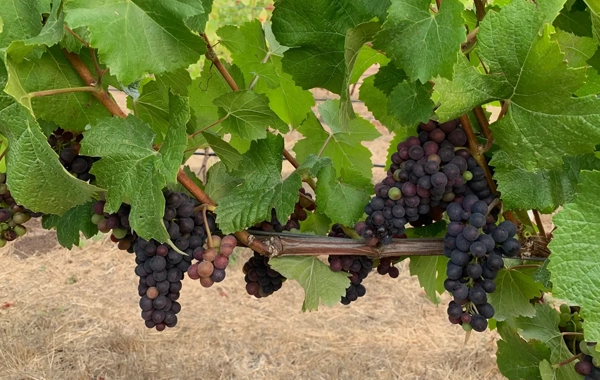
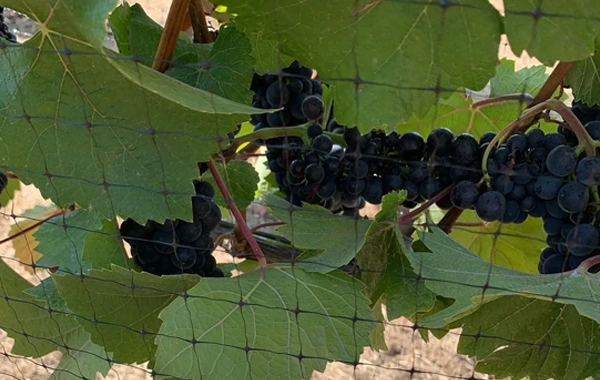
We added netting along the edges of the rows to protect the grapes from bird munching. Bird pressure has been more severe this year because of drought, and they just love Pinot Noir when it is close to being ready for picking!
Harvest is roughly forecast for the end of August to early September. We hope for a good crop! Last year we had 9.3 tons, and this year we are hoping for closer to 12 tons for our 7-acre vineyard. We have three wineries hoping for 3 tons each – Joseph Jewell, Brooks Note, and Lynmar Estate – plus 3 tons for the Panther Ridge label. Hopefully we’ll all go home happy!
